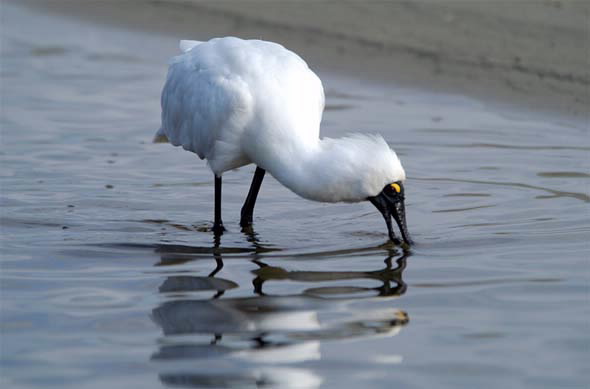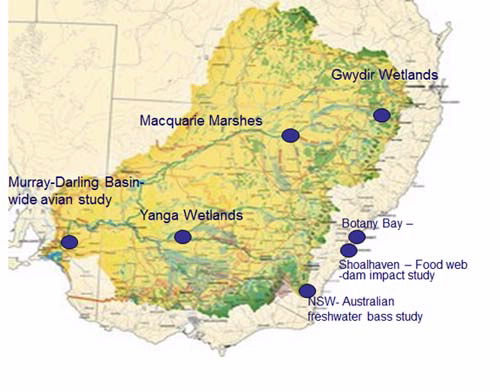In 1974, Australia was one of the first nations to sign up to the Ramsar Convention – the first modern treaty between nations to conserve natural resources, like wetlands.
 |
| A Royal Spoonbill in Towra Point Nature Reserve, a Ramsar wetland. There are more than 100 species of birds that have been identified in the nature reserve. (Image: Phil Straw) |
Ramsar encourages member countries to nominate significant ecological, botanical, zoological, limnological or hydrological sites.
The first significant wetland marked for conservation was located in Australia at the Cobourg Peninsula in the Northern Territory. There are now over 2000 Ramsar sites located around the world, covering 208,518,409 hectares.
When most Australians think about wetlands usually Kakadu or the struggling Murray-Darling Basin come to mind. But Australia has over 65 Ramsar sites, covering more than 8.3 million hectares, including the lesser-known Towra Point Nature Reserve.
This internationally significant Ramsar wetland is located on the southern side of the iconic Botany Bay and is part of Sydney’s largest and most diverse wetlands environment, containing 60 percent of the saltmarsh communities in the region and 40 percent of the region’s mangroves.
More than 100 species of birds have been identified at the Nature Reserve including 34 species of migratory birds, some of which fly up to 12,000 km from places like Siberia, China and Japan.
Significant work is being conducted at this site by ANSTO scientists to fulfil Australia’s international obligations to monitor wetlands as an aspect of their maintenance and preservation.
Dr Stephanie Kermode and Professor Henk Heijnis from ANSTO’s Institute of Environmental Research have been scrutinising core samples of mud taken from Towra Point Nature Reserve.
Despite being surrounded by a range of Sydney’s largest industrial sites, preliminary results from the ANSTO team show that Towra Point Nature Reserve is being successfully protected from potentially harmful heavy metal pollution.
Levels of heavy metals in the sediments have dropped since the study started in 1998 and are now well within Australian and New Zealand quality guidelines.
The 1998 study was repeated in 2013 with a state of the art sediment scanner called ITRAX, which is able to analyse a metre of sediment core at high resolution in one afternoon (something that previously took researchers up to a month).
ANSTO is also conducting studies at Ramsar wetlands such as Macquarie Marshes and Gwydir Wetlands, both in the Murray Darling Basin.
 |
| ANSTO conducts studies of a number of environmentally significant sites throughout NSW and other parts of Australia. |
ANTO’s work has highlighted healthy wetland food web structures, competition between native and introduced species, and use of various water sources, such as groundwater, surface water and rainwater, by the iconic River Red Gum during drought.
Laboratory methods are at the forefront of research into these aquatic ecosystems. Nuclear techniques including accelerator mass spectrometry, radio-tracing and stable isotope-ratio mass spectrometry provide unique benefits in the study of freshwater ecosystems, and are utilised by ANSTO's Aquatic Ecosystems group to better understand their complex nature and inform decisions for water use.
Water is a vital resource that is under ever-increasing demand from population and industry growth, agricultural development and environmental allocations that are crucial in sustaining the natural ecosystems in which we rely.
Recently Dr Kermode was involved in discussions at the 2013 Ramsar conference which centered on the importance of understanding environmental variability. Change and variability are an integral part of wetlands and an understanding of those rates of change is essential for overall management and planning.
Dr Kermode says the scientific community need to work on communicating what they do and why it matters in order to protect these vulnerable resources.
She stresses the need for managers overseeing Ramsar wetlands to engage and be involved in the scientific research.


